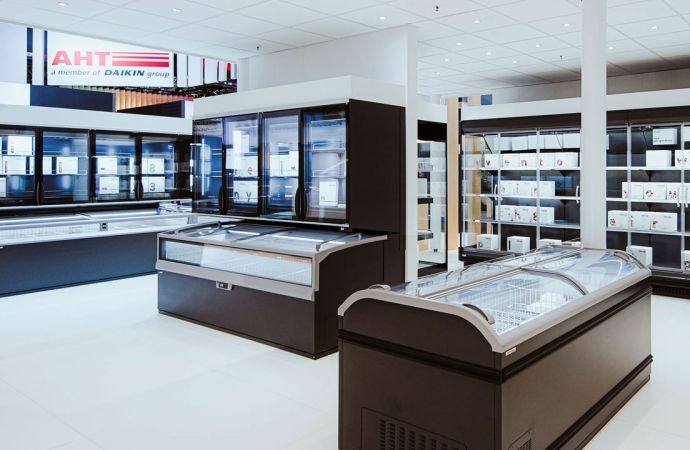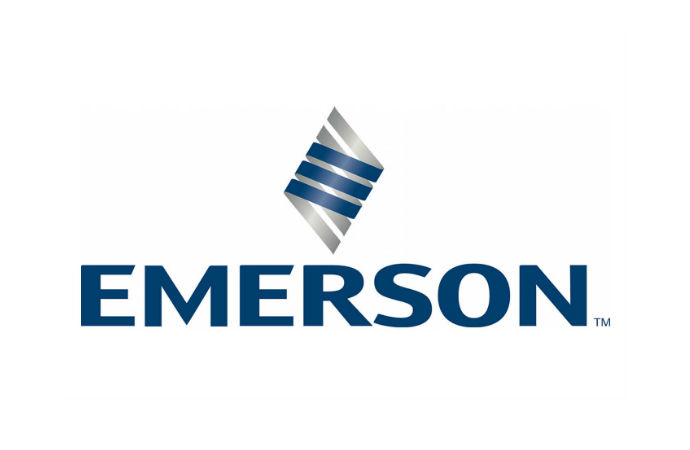André Patenaude says regulations bring hydrocarbons' viability to the forefront.

André Patenaude at ATMO America 2017, San Diego, United States.
Photo credit: Ben Beech.
Of all the commercial refrigeration sectors impacted by President Obama-era regulatory activities, the small-format retail and foodservice markets have arguably been hit the hardest.
Comprised of small grocers, convenience stores and restaurants, these markets not only utilize the widest variety of equipment and system architectures, they are also faced with understanding new refrigerant requirements in each equipment class. The net result is a sea change to refrigeration architectures in these segments — one where natural refrigerants propane (or R290) and CO2 (or R744) play an increasingly vital role.
With so many factors impacting these markets, it’s easy to see why there’s an unusually high degree of confusion and uncertainty. Making sense of it all is not easy, but many owner/operators are tasked with selecting the refrigeration platforms that will accomplish their short- and long-term operational objectives. And with numerous regulatory deadlines from both the Environmental Protection Agency (EPA) and the Department of Energy (DOE) approaching, these decisions must be made quickly.
In recent years, the industry has made tremendous progress in developing equipment that is more environmentally friendly and energy efficient than their predecessors. While recent actions from the Trump administration suggest that deregulation measures may yet be on the horizon, the specific extent of these changes is still largely unknown. As things currently stand, environmental regulations introduced by the previous administration remain in place, and the transition to equipment that utilizes refrigerants with lower global warming potential (GWP) is still underway.
New equipment and system architectures
Because of this convergence of regulatory activity, operators can expect new equipment options and architectures from OEMs. It’s also becoming more common for retailers and restaurant chains to state sustainability objectives — from the selection of eco-friendly refrigerants to lowering their overall carbon dioxide equivalency.
In response, many OEMs have taken the approach of integrating both EPA and DOE requirements in the same design cycle. This entails selecting a refrigerant that offers both lower-GWP levels and performance efficiencies to meet the new energy targets. Among these OEMs, some are developing new units in hopes of achieving compliance for future, potentially lower-GWP requirements. For those taking this 'end game' approach and attempting to clear these regulatory hurdles once and for all, natural refrigerants are currently the only options for achieving this objective. Here’s a look at some of the new equipment and system architectures for R290.
R290
Overview As a viable replacement to R404A and R134a, R290 delivers well-documented performance efficiencies and superior thermodynamic properties, without compromising capacity. And in Emerson’s independent test labs, R290 consistently outperforms R404A by delivering energy efficiency gains of more than 20%.
In Emerson’s independent test labs, R290 consistently outperforms R404A by delivering energy efficiency gains of more than 20%."
– André Patenaude, Emerson Commercial and Residential Solutions
The caveats for R290 use come down to its flammability (class A3), serviceability concerns and charge limits. While there are currently no certification requirements to service R290 systems, operators may have difficulty finding technicians who are comfortable handling and servicing the equipment. In many instances, serviceability concerns are largely offset by equipment design — as many systems are self-contained and factory-sealed to enable “plug and play” installation and servicing.
The 150g charge limit currently restricts R290 use to smaller systems that utilize fractional horsepower compressors or condensing units.
Applications
Stand-alone: R290 is most commonly found in self-contained display cases that feature a built-in condensing unit in each refrigeration fixture. These cases have been in service for more than a decade in Europe and have become increasingly popular in the U.S. in recent years.
Integrated cases: Deployed as an alternative to centralized systems, these large refrigeration cases integrate multiple R290 compressors on individual 150g circuits. And each compressor has its own supporting system components (e.g., fans, valves, piping, etc.). This is an instance where larger charge limits would greatly simplify equipment design and expand application potential.
Micro-distributed architecture: Like stand-alone cases, each fixture is designed with its own condensing unit. The difference is, micro-distributed systems are designed to remove exhaust heat from the building through a shared heat rejection/water loop system that extracts the heat from each unit and diverts it to a condenser/cooler on the roof. While store comfort is optimized, operators may expect higher first costs and a slight energy penalty due to the secondary heat exchange design. However, in warmer climates, the removal of exhaust heat from facility — and the load reduction on the HVAC system — may offset this penalty.
Ice machines: The EPA recently listed R290 as acceptable for use in ice machines. The type of ice machine (cuber or flaker) is a key design consideration for OEMs, but component manufacturers are offering fractional horsepower compressors to integrate with both types and help with evaporator design.
André Patenaude is director - CO2 business development, Emerson Commercial and Residential Solutions (which now incorporates Emerson Climate Technologies). He was selected last year as one of Accelerate America’s 25 Movers & Shakers driving adoption of natural refrigerants.
To read the original article in its entirety In the May issue of Accelerate America, click here.
Related stories




